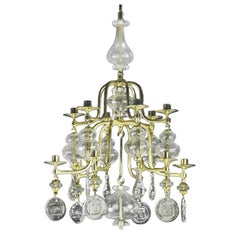Georg Jensen 2ab
Recent Sales
Vintage 1960s Swedish Mid-Century Modern Chandeliers and Pendants
Wrought Iron
Vintage 1960s Swedish Chandeliers and Pendants
Blown Glass
Vintage 1960s Swedish Mid-Century Modern Chandeliers and Pendants
Wrought Iron
Vintage 1960s Swedish Scandinavian Modern Chandeliers and Pendants
Wrought Iron
Vintage 1960s Swedish Chandeliers and Pendants
Wrought Iron
Vintage 1960s Swedish Chandeliers and Pendants
Wrought Iron
Erik Höglund for sale on 1stDibs
Swedish glass master Erik Höglund reveled in unconventional techniques and practices — the Karlskrona native once drove glassblower Ruben Hjelm out of a studio at Boda after mixing potatoes into a crucible of molten glass to determine if he could generate bubbles in the finished object. Höglund always walked his own path, and his individuality and creative spirit defines the range of decorative objects, lighting fixtures and other works in glass that he created over the years.
Höglund was born in 1932 and studied drawing and sculpting at the Swedish School of Arts. Despite his limited experience with glass, Höglund joined Boda Glassworks when the manufacturer reached out to the school for the services of a young glass artist. He taught himself how to blow glass at night and found inspiration on travels through Europe as well as in his everyday life, creating sculptures that boasted exquisite color pairings and subdued, streamlined forms. He worked at Boda for 20 years.
The Swedish National Museum purchased Höglund’s early works for an exhibition of Swedish glass art, and in 1957, Höglund’s stunning and expressive objects and sculptures earned the Danish Lunning Prize — the highest honor for an up-and-coming Scandinavian artist. He garnered international acclaim and his colorful iron and glass candleholders, candelabras and vases went on display in New York City. His work is held in the collections of the Blekinge Museum, the National Museum of Stockholm and the Cooper Hewitt, Smithsonian Design Museum.
Höglund left Boda in 1973 to establish his own smithery. He returned to glass design in the subsequent years, when the legendary innovator created richly colored and provocative works for Pukeberg, Åhus, Nový Bor and other manufacturers.
On 1stDibs, find a collection of Erik Höglund decorative objects, lighting and dinnerware.
Finding the Right chandeliers-pendant-lights for You
Chandeliers — simple in form, inspired by candelabras and originally made of wood or iron — first made an appearance in early churches. For those wealthy enough to afford them for their homes in the medieval period, a chandelier's suspended lights likely exuded imminent danger, as lit candles served as the light source for fixtures of the era. Things have thankfully changed since then, and antique and vintage chandeliers and pendant lights are popular in many interiors today.
While gas lighting during the late 18th century represented an upgrade for chandeliers — and gas lamps would long inspire Danish architect and pioneering modernist lighting designer Poul Henningsen — it would eventually be replaced with the familiar electric lighting of today.
The key difference between a pendant light and a chandelier is that a pendant incorporates only a single bulb into its design. Don’t mistake this for simplicity, however. An Art Deco–styled homage to Sputnik from Murano glass artisans Giovanni Dalla Fina (note: there is more than one lighting fixture that shares its name with the iconic mid-century-era satellite — see Gino Sarfatti’s design too), with handcrafted decorative elements supported by a chrome frame, is just one stunning example of the elaborate engineering that can be incorporated into every component of a chandelier.
Chandeliers have evolved over time, but their classic elegance has remained unchanged. Not only will the right chandelier prove impressive in a given room, but it can also offer a certain sense of practicality. These fixtures can easily illuminate an entire space, while their elevated position prevents them from creating glare or straining one’s eyes. Certain materials, like glass, can complement naturally lit settings without stealing the show. Brass, on the other hand, can introduce an alluring, warm glow. While LEDs have earned a bad reputation for their perceived harsh bluish lights and a loss of brightness over their life span, the right design choices can help harness their lighting potential and create the perfect mood. A careful approach to lighting can transform your room into a peaceful and cozy nook, ideal for napping, reading or working.
For midsize spaces, a wall light or sconce can pull the room together and get the lighting job done. Perforated steel rings underneath five bands of handspun aluminum support a rich diffusion of light within Alvar Aalto's Beehive pendant light, but if you’re looking to brighten a more modest room, perhaps a minimalist solution is what you’re after. The mid-century modern furniture designer Charlotte Perriand devised her CP-1 wall lamps in the 1960s, in which a repositioning of sheet-metal plates can redirect light as needed.
The versatility and variability of these lighting staples mean that, when it comes to finding something like the perfect chandelier, you’ll never be left hanging. From the whimsical — like the work of Beau & Bien’s Sylvie Maréchal, frequently inspired by her dreams — to the classic beauty of Paul Ferrante's fixtures, there is a style for every room. With designs for pendant lights and chandeliers across eras, colors and materials, you’ll never run out of options to explore on 1stDibs.

